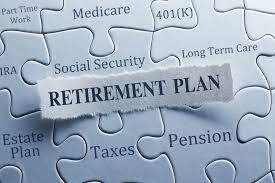I call this time of the year Retirement Plan Crazy Season where plan sponsors decided to change plan providers to get things changing smoothly on January 1. I call it Crazy Season based on NASCAR’s Crazy Season when drivers and car sponsors switch teams by making new deals for the following Cup season.
In addition, it is this time of the year that many employers decide to implement a plan for the current year as the deadline for putting a plan in place for a calendar year plan is now the due date of your tax return.
One of the difficult choices for an employer in deciding to sponsor a plan is which type of qualified plan to sponsor. Here is just a small list:
1. Number of employees to participate: The more, maybe not the merrier. But the more, is less likely you will be pursuing a defined benefit plan and more likely pursuing a 401(k) plan.
2. Age and compensation of the owner(s)/highly compensated employees. Despite what the folks protesting at Wall Street believe, one of the goals of setting up a retirement plan is saving the maximum for the owners and highly compensated employees of the business. One way to achieve maximum savings is the use of a defined benefit plan or a cross-tested allocation that will award higher contributions to these high-paid employees and some of the key factors are age and compensation.
3. How much can the Employer afford to contribute? When it comes to defined benefit plans and safe harbor 401(k) allocations, as well as the near obsolete money purchase plans, the employer must dedicate a fixed contribution each year (which is decided after the end of the Plan Year). Does the Employer see that it has the cash flow over the next couple of years to make such a financial commitment? I can’t tell you how many times I have had sole proprietors say they want to save the maximum under a defined benefit plan. All of a sudden, they needed to pare back after the sticker shock of the maximum contribution that the actuary determined.
4. Ask the Employees. A small business is usually not a democracy but it may be wise to ask employees for input in setting up a retirement plan. Namely, the questionnaire really should be tailored towards trying to identify whether they see this plan as an important employee benefit and if the employer decides the 401(k) route, whether the employees would defer. Now employees shouldn’t have a say in designing the plan since they aren’t going to be the ones funding the contribution.
5. Find a financial advisor. If a small business has a non-owner employee, a financial advisor should be hired. No ifs, ands, or buts.
6. Find a good TPA/ERISA attorney. To have a good retirement plan, you need a good team. I cannot stress the need for businesses to find a solid third-party administration firm (TPA) and a good ERISA attorney (preferably an independent ERISA attorney who will draft plan documents at costs comparable to what a TPA would charge).







